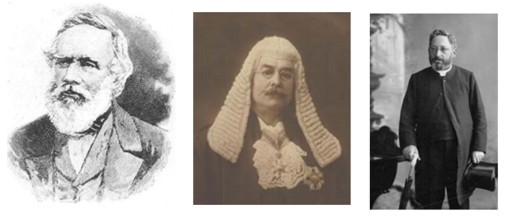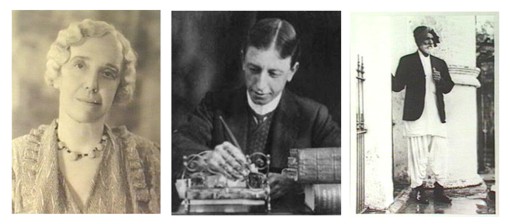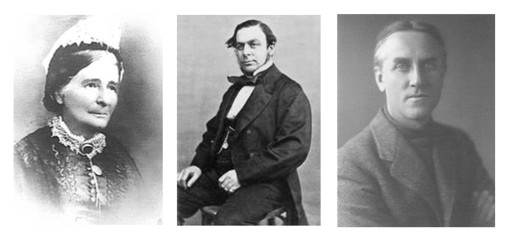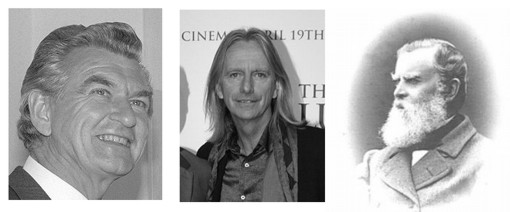150 Great South Australians – Part 1 A-I
What defines a “great” South Australian? Well, I believe it to be someone (man or woman) who has not only done something exceptional within the community, but also someone that has potentially changed the way things are done.
I came across a newspaper article in The Advertiser dated 12 July 2008, titled “150 Great South Australians”, which was a compilation by a group of senior writers of who they believe has earned the title of “Great South Australian”. The criteria was simple: to be eligible the person must have either been born in South Australia or had “contributed in some way to the promotion of South Australia”. It was no easy task and with the list far longer than the 150 names, it ended up being tough on who to actually leave out.
Because listing all 150 names in a single list would make it ridiculously long, I have decided to make it a two-parter post. With the first 75 names covering A-I, and the second being J-Z. You’ll see that each person has their full name, date or birth and date of death (if relevant) listed as well as a brief line or two on why they made the list. Each is hyperlinked to where you’ll find more details about the person.
Have a read through the list, and see how many names you recognise!
George Fife Angas (1789-1879)
Merchant, banker, philanthropist
Was a major landholder in the early colony of South Australia, chairman of the South Australian Company and started the SA Banking Company, later the Bank of SA.
George French Angas (1822-1886) Naturalist and artist
Son of George Fife Angus, he made an international reputation as a painter, with much of his work involving South Australian wildlife.
Henry Ayers (1821-1897) Businessman and politician
Made his fortune developing minerals in South Australia and later entered parliament where he was premier five times.
Peter John Badcoe (1934-1967) Soldier
Won the Victoria Cross in the Vietnam War. He was later killed in action.
Walter Hervey Bagot (1880-1963) Architect
A prominent businessman and architect whose work included elements of the University of Adelaide and the major cathedrals.
John Stokes Bagshaw (1808-1888) Manufacturer of agricultural machinery
At a time of labour shortages in rural areas, Bagshaw manufactured agricultural machinery, including some of his own inventions.
Richard Chaffey Baker (1841-1911) Barrister, pastoralist and politician
Adelaide-born barrister who became a prominent politician and attorney-general. Was challenged by the premier, Charles Kingston, to a gun duel in Victoria Square.
Robert Barr Smith (1824-1915) Businessman and philanthropist
Born in Scotland, he was the businessman behind the pastoral firm Elder Smith and Co.
Tom Elder Barr Smith (1863-1941) Businessman and philanthropist
Son of Robert Barr Smith, Tom inherited great wealth and took over the reins of Elder Smith and Co.
Max Basheer (1927- ) Football administrator
Chairman of the SANFL, he oversaw construction of Football Park and the introduction of the South Australian teams into the AFL.
Percy Raymond Begg (1898-1983) Orthodontist
Brought relief to thousands of adults and children suffering dental problems with techniques he developed.
Lionel Albert Jack (John) Bishop (1903-1964) Musician and Artistic Director of the Adelaide Festival
A gifted musician, he became Professor of Music at the Elder Conservatorium and was a driving force behind the first Adelaide Festival of Arts.
John McConnell Black (1855-1951) Botanist
A former Advertiser journalist, he wrote ‘The Naturalised Flora of South Australia’ and later ‘Flora of South Australia’ which he also illustrated.
Malcolm Blight (1950- ) Footballer and football coach
Malcolm won both the Magarey Medal in South Australia and the Brownlow medal in Victoria. Coached four AFL teams including the Adelaide Crows who won two premierships.
Abraham Tobias Boas (1842-1923) Jewish minister
Abraham came to Adelaide from Holland and became a powerful figure, not only in the Jewish community, but also among the Christian churches across Australia. And in 1921 he was granted the title of Rabbi, making him South Australia’s first Rabbi.
John Langdon Bonython (1848-1939) Parliamentarian and newspaper proprietor
Part owner and proprietor of ‘The Advertiser’, he was elected to the first Federal Parliament in 1901.
Bill Botell (?- ) Designer
In the 1970s Australian state governments made wearing car seat belts compulsory, and a variety of restraints for children came on the market. But none for babies. There was no really secure way to protect babies in a smash until 1984. While working with Rainsfords Safe-n-Sound in Adelaide, Bill invented of the baby capsule, consisting of a bassinette in a base held in by a seat belt .
Donald Bradman (1908-2001) Cricketer and administrator
Australian cricket’s most successful batsman, he retired in 1948 with a Test average of 99.94. Became an influential administrator in Australian and world cricket.
William Henry Bragg (1862-1942) and William Lawrence Bragg (1890-1972) Scientists, teachers and Nobel prize winners
Two of Australia’s most important scientists, particularly in the area of molecular biology.
John Jefferson Bray (1912-1995) Chief Justice and poet
Chief Justice of South Australia from 1967 to 1978 and later chancellor of the University of Adelaide.
George Brookman (1850-1927) Businessman, politician and philanthropist
Successful mining speculator and stockbroker, he started the Adelaide Electric Supply Company and was its first chairman.
Henry John ‘Harry’ Butler (1889-1924) Aviator
A daredevil aviator who flew in Britain in World War I and was the first pilot in Australia to deliver mail by air over water, flying from Adelaide to Minlaton.
Hugh William Bell Cairns (1896-1952) Neurosurgeon
Born at Port Pirie, he was a pioneer of neurosurgery in Britain and a major advocate for the use of compulsory use of helmets for motorbike riders.
Ian Michael Chappell (1943- ) and Gregory Stephen Chappell (1948- ) Cricketers
Ian captains Australia from 1971 to 1975, Greg from 19765 to 1977 and again from 1979 to 198. Both played a major part in World Series Cricket.
John Burton Cleland (1878-1971) Pathologist and naturalist
Made major breakthroughs in the treatment of dengue fever and encephalitis and was an authority on Australian flora.
Fanny (Kate) Boadicea Cocks (1875-1954) Welfare worker and police officer
Appointed as the first female police officer in the British Empire in 1915, she worked widely with young girls and on her retirement established a home for neglected babies.
Walter Russell Crocker (1902-2002) Diplomat and Australian ambassador
Australian ambassador to several major countries, on retirement became Lieutenant Governor from 1973 to 1982.
James Bartholomew ‘Bart’ Cummings (1927- ) Horse trainer
Known as the Cups King, he trained 11 Melbourne Cup winners.
Samuel Davenport (1818-1906) Politician and industrialist
A long-term member of the Legislative Council, he travelled extensively promoting South Australian industry.
Constance Muriel Davey (1882-1963) Psychologist and educator
The first psychologist in South Australian Education Department, she did pioneering work with disadvantaged children.
David David (1940- ) Facial surgeon
Established the internationally known cranio-facial unit at the Women’s and Children’s Hospital in 1975.
Peter Smith Dawson (1882-1961) Singer
A pioneer of acoustic and gramophone recordings, he sold more than 13 million copies. Peter was the first person to record ‘Waltzing Matilda’.
Lillian Daphne de Lissa (1885-1967) Kindergarten pioneer
Played a major part in the establishment of the Kindergarten Union and did pioneering work among disadvantaged children.
Clarence Michael James ‘C.J.’ Dennis (1876-1938) Poet and freelance journalist
Born at Auburn near Clare, C.J. became a prolific writer with ‘The Songs of a Sentimental Bloke” probably the best known.
Thomas Currie ‘Diver’ Derrick (1914-1945) Soldier
Was one of Australia’s finest fighting soldiers in World War II, winning the Victoria Cross and the Distinguished Service Medal. Like Peter Badcoe, Derrick was killed in action as is a symbol of all Australian who served in war.
Bejah Dervish (1862-1957) Camel driver
Born in Pakistan, he came to Australia in about 1890 and helped explorer Lawrence Wills open up large areas of the inland.
Charles Duguid (1884-1986) Medical practitioner and Aboriginal worker
In his 102 years, Charles worked tirelessly for Aboriginal health issues and reforms and helped establish the Ernabella mission.
Frederick (Lloyd) Dumas (1891-1973) Newspaper executive
Lloyd was managing editor, managing director and finally chairman of ‘The Advertiser’ from 1929 to 1967, and one of the most powerful figures in Australian publishing.
Donald Allan Dunstan (1926-1999) Lawyer and politician
An reforming Labor premier in 1967 and again between 1970 and 1979, he modernised South Australia and attracted national prominence.
Thomas Elder (1818-1897) Pastoralist and philanthropist
Worked extensively in the agricultural and pastoral industries and was a founding partner in the pastoral firm Elder, Smith and Co.
Gladys Elphick (1904-1988) Worker for Aboriginal welfare
After spending 35 years at the Point Pearce Aboriginal Reserve, “Auntie Glad” became a tireless worker for Aboriginal welfare.
George Henry Farr (1819-1904) Clergyman and headmaster
Born in London, he became one of the first principals of St Peter’s College, a job he held for 24 years from 1854.
Julia Warren Farr (1824-1914) Social worker
She came to Adelaide with he husband George, and worked with destitute children. Later she created a home for people suffering physical disabilities.
Francis Hardey Faulding (1816-1868) Chemist
Opened a chemist at 5 Rundle Street, Adelaide in 1845 and later became the founder of the pharmaceutical company F.H. Faulding.
Howard Walter Florey (1898-1968) Medical scientist and Nobel Prize winner
Born in Adelaide, Florey developed antibiotic penicillin, which had given hundred of millions of people longer, healthier lives.
John Flynn (1880-1951) Presbyterian minister, founder of the Royal Flying Doctor Service
Moved by the dread of isolation while doing missionary work in northern South Australia, Flynn helped establish the Inland Mission and developed the Royal Flying Doctor Service.
David Fowler (1826-1881) Merchant
David was a founder of the wholesale merchants D. andJ. Fowler and played a significant role in developing Adelaide’s retail sector.
Alfred Edward Gerard (1887-1950) Electrical merchant and Aboriginal welfare worker
In 1907 Afred saw the potential of the emerging electrical industry and built an empire based on the firm Gerard and Goodman.
Claude Gibb (1898-1959) Engineer and industrialist
Born at Alberton, Gibb was an outstanding engineer whose talents were harnessed by the British war effort. He helped design the Centurion tank and other weapons and military equipment.
Gladys Ruth Gibson (1901-1972) Educator and women’s activist
A major figure in South Australian education until her retirement 1961, she was on a wide range of organisations, many associated with women’s issues.
William (Anstey) Giles (1860-1944) Surgeon
A pioneer in ear, nose and throat surgery, he became the dean of the Faculty of Medicine at Adelaide University.
Samuel Thomas Gill (1818-1880) Artist
A talented painter, Gill captured on canvas many aspects of early life, including exploration in South Australia.
Adam Lindsay Gordon (1833-1870) Writer and poet
Horseman and politician , Gordon lived for several in South Australia’s South-East and is recognised as one of Australia’s greatest poets. “Kindness in another’s troubles, courage in one’s own …” was one of his finest lines.
William Christie Gosse (1842-1881) Explorer and surveyor
Working with the South Australian Survey Office, Gosse carried out extensive exploration of inland Australia and was the first European to discover and name Ayres Rock (Uluru).
Robert Gouger (1802-1846) Colonial secretary and colonial treasurer
Gouger was a driving force behind the establishment of South Australia as a colony before Governor Hindmarsh arrived in 1836. He later took up several key public service roles.
George Woodroffe Goyder (1826-1898) Surveyor and conservationist
South Australian Surveyor General for more than 30 years, he developed Goyder’s line which marks the limit of reliable rainfall in South Australia’s north.
Margaret Graham (1860-1942) Nurse and army matron
Royal Adelaide Hospital matron for 22 years, she was a strong advocate for nurses’ rights and served with distinction overseas during World War I.
Janine Haines (1945-2004) Politician
The first female federal parliamentarian leader of a political party, the Australian Democrats.
George Hall (1818-1881) Manufacturer of soft drinks
Founder of the Halls soft drink company which operated in Adelaide for 149 years.
Henry Richard ‘Captain’ Hancock (1836-1919) Mine superintendent
Appointed manager of the Moonta copper mine in 1864, a position he held for 31 years.
Alfred Hannaford (1890-1969) Inventor and manufacturer of agricultural machinery
Developed grain cleaning machinery and other agricultural equipment.
John Anderson Hartley (1844-1896) Educator
Inspector general of schools from 1878 to 1896 and a founder of the University of Adelaide.
Robert James Lee ‘Bob’ Hawke (1929- ) Politician and union leader
Born at Bordertown, Bob Hawke was a union leader and Australia’s 23rd prime minister. He is Australia’s the longest-serving Labor prime minister.
Charles Allan Seymour Hawker (1894-1938) Pastoralist and parliamentarian
Twice seriously injured in World War I, Hawker owned considerable land holdings in South Australia and, in 1929, entered Federal Parliament where he was a strong advocate for rural interests.
Colin Sidney Hayes (1924-1999) Racehorse trainer and breeder
Trained 5,333 winners, and won the South Australian training premiership 28 times and established the Lindsay Park Stud at Angaston.
Edward Waterfield ‘Bill’ Hayward (1903-1983) Businessman and philanthropist
Long-time managing director and chairman of the board of the retailer John Martin and Co. he inaugurated Adelaide’s Christmas Pageant in 1933.
Robert Murray Helpmann (1919-1986) Actor, dancer, producer and choreographer
A brilliant ballet dancer who expanded his talents to become a Shakespearean actor, and world-renowned choreographer and producer.
Lleyton Glynn Hewitt (1981- ) Tennis player
Adelaide-born, the former world number one ranked tennis player won the US and Wimbledon titles.
Wilhelm Ernst (Hans) Heysen (1877-1968) Artist and conservationist
Born in Germany, he became one of Australia’s best-known painters specialising in pastoral landscapes, particularly featuring gumtrees.
Robert (Scott) Hicks (1953- ) Film director and screenwriter
Born in Uganda. An Academy Award-nominated film director, based in Adelaide, who has directed more than a dozen movies including “Shine” in 1986.
Lancelot Leonard ‘Lance’ Hill (1902-1986) Inventor and manufacturer
With Harold Eustace Hill Ling (1907-1966) as part of Hills Industries, Lance is credited with inventing the Hills hoist clothes line.
Edward Wheewall Holden (1885-1947) Car manufacturer
As as Adelaide manufacturer, developed the Holden car and established links with the General Motors Corporation in the United States.
Walter Watson Hughes (1803-1887) Pastoralist and mine owner
Born in Scotland, the former China Sea opium dealer developed the huge copper mines at Moonta in the 1850s.
I know I’ve titled this Par 1 A-I, but there are no I names listed above, as there weren’t any in the original. But I didn’t want to seem like I was skipping over the letter, so still included it. All good? 🙂
While the list of 150 Great South Australians is fascinating in itself, I did have a look around on Trove to see if I could find any older articles of a similar nature, and you know what … I did. Adelaide’s “News” newspaper has an article in the Saturday, 22 November 1930 paper titled Placed South Australia on the Map. It is intriguing reading that article and seeing the similarities even though the lists we complied over 75 years apart.
You can find the Part 2 – J-Z list here.









Leave a Reply